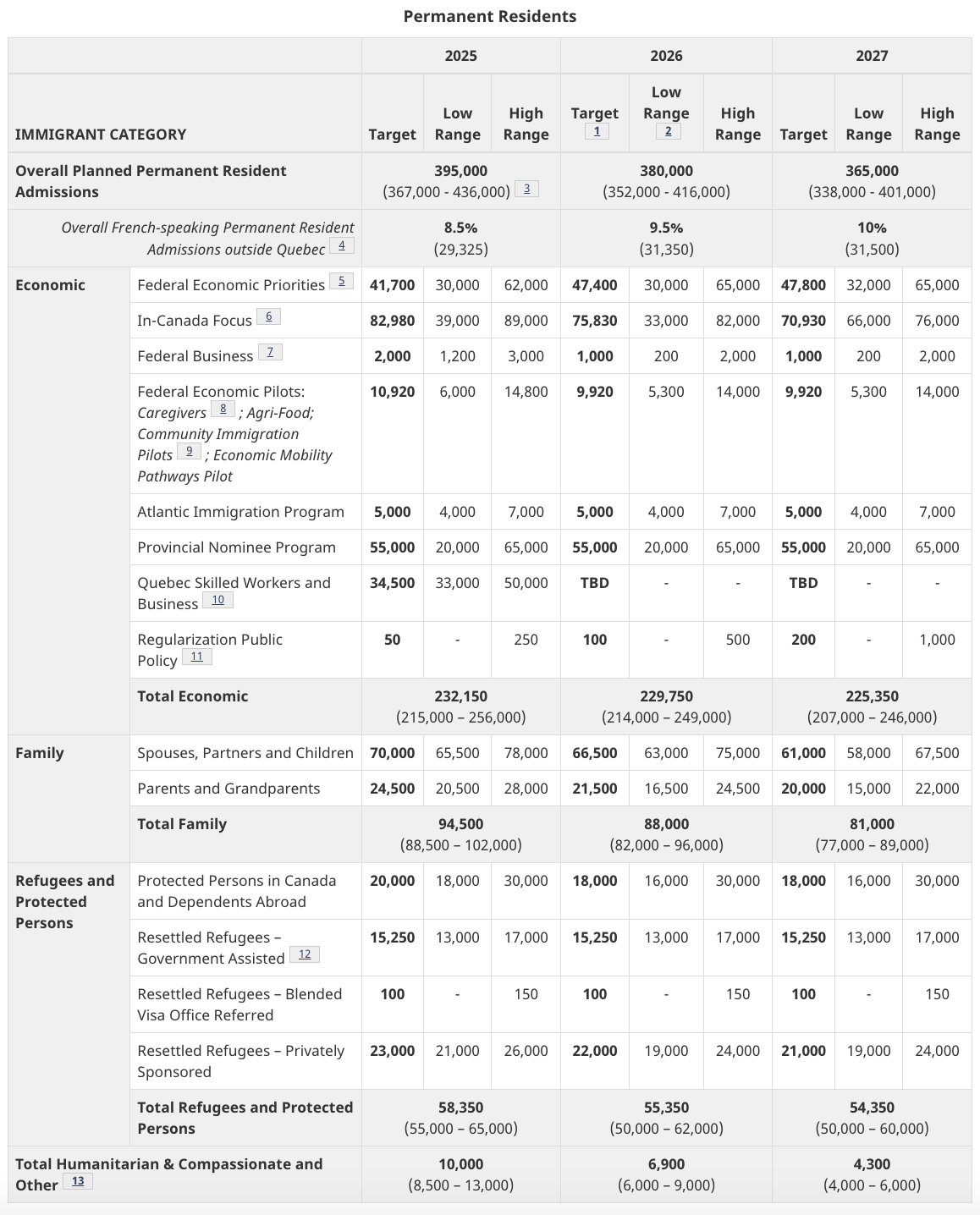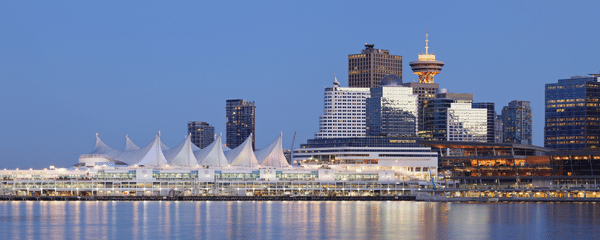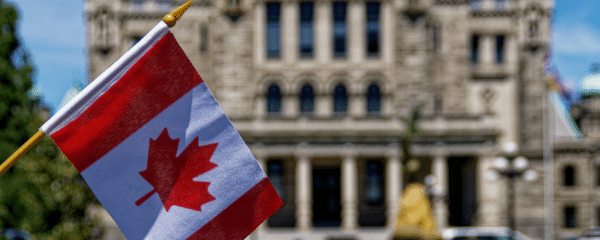Canada’s Significant Cut in Immigration Targets | 2025-2027 Immigration Levels Plan
On October 24, 2024, Immigration, Refugees and Citizenship Canada (IRCC) released the details of its 2025-2027 Immigration Levels Plan, outlining both permanent and temporary resident targets. The plan aims to foster economic growth, address labor market shortages, and promote diversity across the country, including in Francophone minority communities outside Quebec. For the first time, the Levels Plan introduces specific targets for temporary residents.
IRCC’s new approach reflects a shift in focus as Canada moves away from post-pandemic immigration measures. The plan emphasizes a balance between temporary and permanent migration, adjusting levels to better align with community and infrastructure capacity. Canada will reduce the share of temporary residents to 5% of the overall population by the end of 2026, with several measures already in place to support this goal.
Key Highlights of the Immigration Level Plan 2025-2027
Temporary Residents to Permanent Residency
A key component of the new plan is the transition of more temporary residents, including students and workers already in Canada, to permanent residency. According to IRCC, these individuals, having integrated into Canadian society through education and employment, are considered essential to supporting Canada’s economy and workforce.
By 2025, over 40% of new permanent residents are anticipated to be individuals who were already residing in Canada as temporary workers or students.
Focus on Economic Growth and Key Labor Market Sectors
The plan emphasizes sustained economic growth by prioritizing admissions in sectors essential to Canada’s economy, such as healthcare and skilled trades. By 2027, 62% of all permanent resident admissions are expected to come through economic programs, with a primary focus on skilled workers to address labor market needs.
Federal economic programs, including those managed via the Express Entry system, will particularly target workers with experience in healthcare, skilled trades, and proficiency in the French language.
Strengthening Francophone Communities Outside Quebec
A significant increase in French-speaking permanent resident admissions outside Quebec is planned to strengthen cultural and economic diversity across Canada. Targets for these admissions are set at 8.5% in 2025, 9.5% in 2026, and 10% in 2027, exceeding those of the 2024-2026 Levels Plan. This initiative aims to improve demographic balance nationwide.
Temporary Resident Targets 2025-2027
These numbers represent work and study permits issued to newcomers (Workers and Students):
- 2025: 673,650 new arrivals
- 2026: 516,600 new arrivals
- 2027: 543,600 new arrivals
International Students
- 2025: 305,900 – 45% of total temporary resident arrivals.
- 2026: 305,900 – 59% of total temporary resident arrivals.
- 2027: 305,900 – 56% of total temporary resident arrivals.
Workers
- 2025: 367,750
- 2026: 210,700
- 2027: 237,700
Permanent Resident Targets 2025-2027
Over the next three years, Canada plans to decrease the intake of permanent residents to ensure better alignment with community and labor market capacities.
The targets are set as follows:
-
- 2025: 395,000 new permanent residents
- 2026: 380,000 new permanent residents
- 2027: 365,000 new permanent residents
Key components of permanent resident admissions include:
Economic category
Nearly 62% of all admissions by 2027, focusing on skilled workers in critical sectors like healthcare and skilled trades.
-
- 2025: 232,150
- 2026: 229,750
- 2027: 225,350
Family reunification
22% of total admissions will be dedicated to family reunification throughout the three years.
Spouses, Partners and Children:
-
- 2025: 70,000
- 2026: 66,500
- 2027: 61,000
-
- 2025: 24,500
- 2026: 21,500
- 2027: 20,000
Refugees and protected persons
Refugees and protected persons will represent 15% of total permanent resident admissions, ensuring Canada remains a refuge for vulnerable populations globally.
-
- 2025: 23,000
- 2026: 22,000
- 2027: 21,000
Humanitarian and compassionate admissions
21,200 admissions over three years, for individuals admitted on compassionate grounds or through public policies. These admissions also account for Canada’s responses to humanitarian crises, including situations in Ukraine, Sudan, and Hong Kong (Stream A and Stream B), reflecting Canada’s commitment to global humanitarian support.
-
- 2025: 10,000
- 2026: 6,900
- 2027: 4,300
The 2025-2027 Immigration Levels Plan adopts a balanced approach to immigration, acknowledging the vital contributions of both temporary and permanent residents to Canada’s economy and society. By focusing on creating pathways for those already in Canada, supporting family reunification, and boosting French-speaking representation, the plan aims to foster opportunities for newcomers while strengthening Canada’s long-term prosperity.
For more details, please visit the official news release on the Canadian Government’s website.
Visit TWA Canada Immigration News for more related updates.









